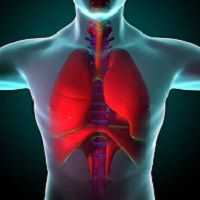Article
Ozone Affects Older Lungs More
Author(s):
Age and toll-like receptor 4 (TLR4) play a part in how the lungs respond to ozone, according to a recent study by Kelsa Gabehart, PhD, of the Department of Pediatrics, National Jewish Health, in Denver, Colorado, and colleagues.

Age and toll-like receptor 4 (TLR4) play a part in how the lungs respond to ozone, according to a recent study by Kelsa Gabehart, PhD, of the Department of Pediatrics, National Jewish Health, in Denver, Colorado, and colleagues. Their research was published in Respiratory Research in September, 2015.
Ozone is a common pollutant, and children tend to be at a greater risk of exposure, and more susceptible to negative effects from it, but according to the researchers, “because sampling of the lower airways in young children is not easily accessible, the biological response of the lung to ozone is still not characterized for infants and children.” Another factor that is not clearly understood is how TLR4 signaling works when the lungs are inflamed due to ozone exposure.
The objective of this study was to use a murine model to more thoroughly investigate how age changes the response in the lungs to ozone exposure and what role TLR4 plays in that response. The researchers used mice between 1 and 6 weeks of age and considered the effects of ozone exposure on “lung permeability and airway neutrophilia, mucus response, and expression of chemokines, antioxidant and neuropeptides in the lung,” as well as TLR4 expression.
Younger mice appeared to be less responsive to ozone exposure than adult mice. The reason for that differences is unclear, but the researchers note, “neonatal mice express lower levels of TLR4 in the lung compared to adult mice, and TLR4 appears to be required for the inflammatory response to ozone.” Specifically, TLR4 seems to be involved in the neutrophilic response to ozone exposure.
The researchers concluded that, in a murine model, the neonatal lung responds to ozone exposure differently than the adult lung, and that the response is at least partially regulated by TLR4 signaling. The results could help increase understanding how pollution affects lung development in children.
v




